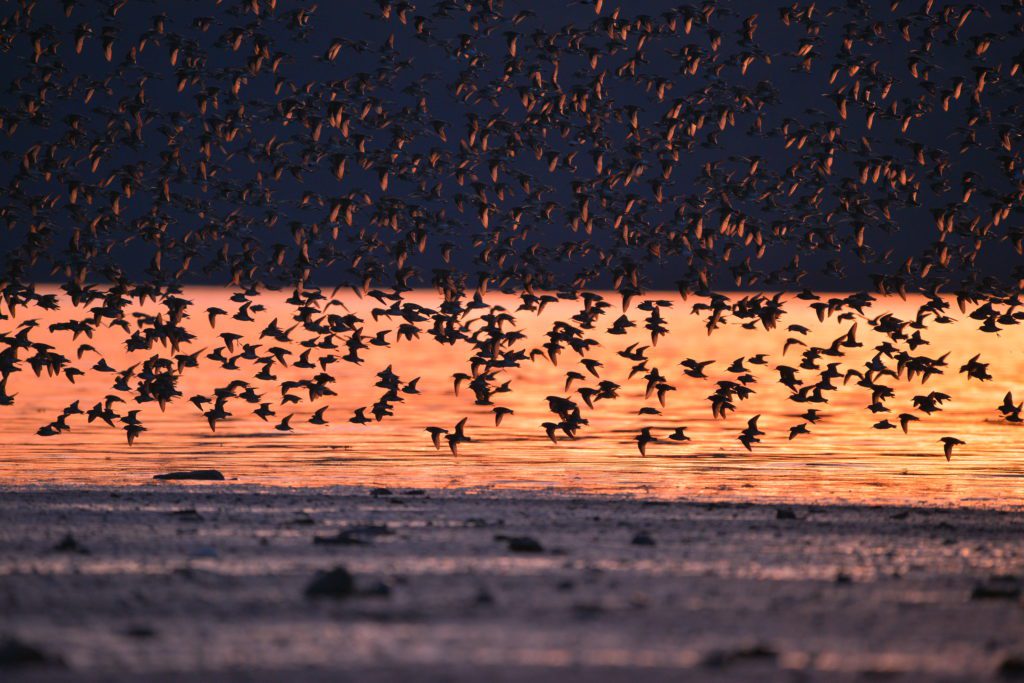
By Erin Cooper
For The Cordova Times
Every May, one of the most spectacular natural phenomena on the planet occurs on the Copper River Delta. Millions of shorebirds congregate on the Delta mudflats in their last effort to fatten up before heading north. This migration is truly a treat for the senses as thousands of birds fly in unison across the mudflats flashing back and forth in search of a place to land with the sound of myriad feathers plying the air.
It’s not just shorebirds that are drawn to the Delta. Geese, ducks and cranes rest and feed here during their flights north. Migration is just the beginning of the excitement on the Delta. As spring progresses, hundreds of thousands of birds nest and raise their young on this expansive system.
Why is this area such a magnet for birds during migration and nesting? It’s the diversity of habitats that the Delta provides. The Copper River Delta is the largest contiguous wetland on the Pacific Coast of North America at around 700,000 acres, a large portion of which is in the Chugach National Forest. This landscape provides a key stopover for migrating shorebirds on their way to their breeding grounds. This wetland is so important for shorebirds that it has been designated as a Hemispheric site, the highest ranking in the Western Hemisphere Shorebird Reserve Network. The Delta is the last stop that many of these birds will make before arriving at their nesting grounds. While on the Delta they double their weight in only a few days making this a critical stop for their success.
The Delta provides a mosaic of wetlands that weave together to make the whole. From the mountains to the coast the landscape morphs from a glacial shrubland to a system of freshwater ponds and sloughs and expansive mudflats. Beyond the mudflats lie a string of sandy barrier islands, providing yet another distinct habitat.
Each of these unique landscapes hosts its own set of characters. Shrubby areas and mossy wetlands are full of songbirds and waterfowl. Semi-palmated plovers and least sandpipers nest on the sandy shores of the braided rivers and barrier islands. Almost every pond on the Delta is host to geese, waterfowl, horned grebes and red-necked phalaropes. The ponds near the outer coast host even more species of birds that rely on fish in the ponds and river systems such as red-throated loons and Aleutian terns. And, finally, the mudflats and estuaries, brimming with invertebrates, provide food for up to 12 million shorebirds that stop on the Delta on their journey north.
What better place and time to experience this wetland and the birds that grace its muddy shores and freshwater ponds than at the Copper River Delta Shorebird Festival (www.coppershorebird.com)? There are so many opportunities to learn more about the area and to get out and explore.
Erin Cooper is the U.S. Forest Service’s Wildlife Program Manager for the Prince William Sound Zone of the Chugach National Forest.





